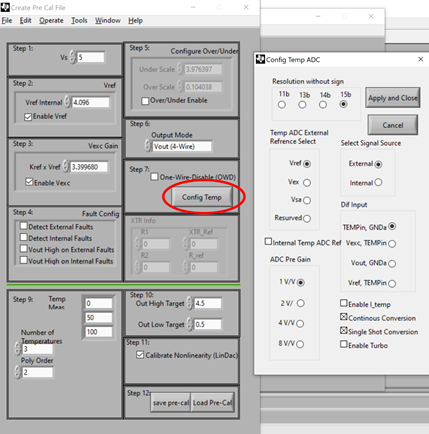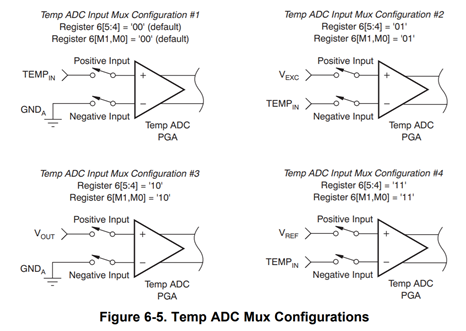I am using our bridge sensor temperature sensitivity as the main source of the temperature input as outlined in the user guide (2.7.2 pg43). Any minimum signal levels sensor output impedance etc.? Is gain adjusted automatically by the PGA309EVM or do I need to calculate signal levels and manually set the gain in software before running the calibration? I noted that the program automatically adjusts gain and offset for the sensor input but the information on how it addresses the temperature sensor calibration is not clear to me. Can I get an explanation on this?
Thank you for your time!
Best,
Joe



